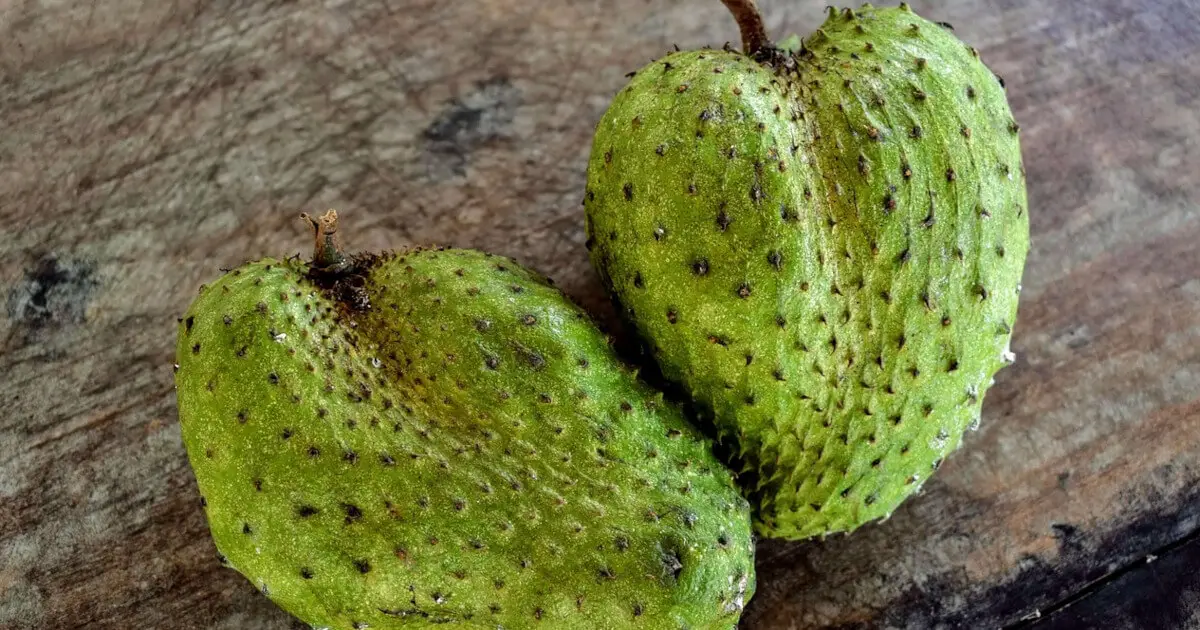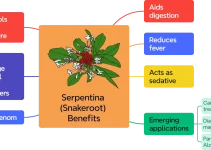
What does soursop do for the body? For those who are not yet familiar with soursop medicinal uses and guyabano health benefits in general, this article is for you.
Table of Contents
Guyabano (Soursop): A Traditional Herbal Remedy with Potential Health Benefits
Guyabano, also known as soursop or graviola (Annona muricata), is a tropical fruit widely recognized in traditional medicine for its potential therapeutic properties. Used for centuries in various cultures, this plant has gained modern interest for its possible benefits in managing infections, inflammation, diabetes, and even cancer.
So what does soursop do for the body that’s worth trying?
Here are 5 traditional uses that took the attention of people looking for natural remedies to their ailments.
4 Traditional Uses and Reported Health Benefits of Guyabano
Various parts of the guyabano plant—including its fruit, leaves, seeds, and bark—have long been used in folk medicine. Some of its most well-known traditional and researched uses include:
1. Infection control
Guyabano stem bark and leaf extracts have demonstrated antibacterial properties in several laboratory studies (Kazaure, et al., 2025). Aqueous extracts from the plant have shown inhibitory activity against Staphylococcus aureus and Escherichia coli.
Staphylococcus aureus is a common cause of skin infections, such as boils, abscesses, and impetigo. In more severe cases, it can lead to pneumonia, bloodstream infections (sepsis), and bone infections (osteomyelitis). Some strains, like MRSA (methicillin-resistant Staphylococcus aureus), are resistant to multiple antibiotics and are especially dangerous in healthcare settings.
Escherichia coli, on the other hand, causes diarrhea, urinary tract infection, meningitis, and sepsis which can be life threatening unless remedied.
The antibacterial effects of guyabano extracts suggest it may help inhibit the growth of these pathogens, although most studies are still at the experimental stage (in vitro or animal models) or require more methodological rigor.
Traditionally, guyabano leaves are crushed or boiled and applied topically to treat skin infections, wounds, and ulcers, leveraging their believed antimicrobial and healing properties.
2. Anti-inflammatory and pain relief
Research suggests that guyabano possesses anti-inflammatory and analgesic (pain-relieving) properties, which may help reduce pain and swelling associated with various chronic inflammatory conditions like arthritis and rheumatism. According to Salim, et al. (2025), intake of soursop-containing preparations benefits individuals with high uric acid levels.
Let’s expound on what these conditions are and how it may apply to you.
Arthritis is a group of conditions characterized by joint inflammation, stiffness, and pain. The most common forms include osteoarthritis (caused by joint wear and tear) and rheumatoid arthritis (an autoimmune disorder where the immune system attacks the joints).
Guyabano’s natural compounds, such as acetogenins and flavonoids, have shown potential to reduce inflammatory markers and alleviate joint discomfort in animal studies.
Rheumatism is a broad term traditionally used to describe chronic pain and inflammation in muscles, joints, and connective tissues. It includes conditions like fibromyalgia and lupus, which may cause widespread pain and fatigue. The anti-inflammatory effects of guyabano could offer mild, natural relief for such symptoms.
Other inflammatory conditions, such as neuralgia (nerve pain) or muscle strains, may also benefit from guyabano’s traditional use as a herbal remedy. The plant’s bioactive components are believed to interfere with pathways that produce inflammation and pain in the body.
Aside from eating the fruit, guyabano leaves are often boiled and used as a warm compress or consumed as a herbal tea to ease aches, pains, and swelling.
3. Blood sugar regulation
Research indicates that guyabano extract may help lower blood sugar levels, suggesting potential use in the management of type 2 diabetes (Adewole and Caxton-Martins, 2006). Type 2 diabetes is marked by insulin resistance and chronically elevated blood glucose, which can lead to serious complications if not properly controlled.
In various animal studies, guyabano (particularly its leaf extract) has demonstrated hypoglycemic properties, meaning it helps reduce high blood sugar levels through several proposed mechanisms:
Stimulates insulin production
Certain phytochemicals in guyabano may enhance the pancreas’s ability to secrete insulin, the hormone responsible for transporting glucose from the bloodstream into cells.
Improves insulin sensitivity
Compounds such as flavonoids and acetogenins may make body cells more responsive to insulin, thus promoting better glucose uptake and lowering blood sugar levels.
Inhibits enzyme that slow down glucose absorption
Guyabano extracts have shown the ability to inhibit enzymes like α-glucosidase and α-amylase, which are responsible for breaking down carbohydrates into glucose. Inhibiting these enzymes can slow down glucose absorption after meals and help prevent blood sugar spikes.
Protection against oxidants
Diabetes is often associated with oxidative stress that damages insulin-producing beta cells. Guyabano contains powerful antioxidants that may protect these cells and improve overall pancreatic health.
While these findings are promising, they are limited to preclinical studies, and human clinical trials are necessary to determine safety, efficacy, and proper dosage. Therefore, guyabano should not be used as a replacement for prescribed diabetes medications, but it may serve as a complementary herbal remedy.
4. Anticancer Potential
Guyabano has attracted significant attention for its possible anticancer properties. Some lab studies suggest that certain natural compounds found in the plant may inhibit the growth of cancer cells. Isaali, Jamil & Ahmad (2024) conducted a systematic review of 11 studies out of 475 abstracts.
They found out that soursop extracts exhibit beneficial effect against cancer. The extracts have cancer cell inhibitory effect, causes apoptosis or programmed cell death, and selective killing of cancer cells. The researchers caution, however, that more research is needed to validate the efficacy and safety of soursop.
5. Other traditional uses
Guyabano is also traditionally used as a sedative, antispasmodic, and emetic (a substance that induces vomiting). These uses are largely anecdotal and require more scientific validation.
Nutritional Value of Guyabano
Guyabano is a nutrient-rich fruit that supports general wellness. It is a good source of:
- Vitamin C – supports immunity and acts as an antioxidant
- Vitamin B1 (Thiamine) – aids energy metabolism
- Vitamin B2 (Riboflavin) – supports cellular function
- Potassium – helps regulate blood pressure
- Dietary Fiber – promotes digestive health
These nutrients make guyabano a healthy addition to a balanced diet when consumed in moderation.
Cautions and Potential Side Effects
While guyabano fruit is generally safe when eaten as food, using other parts of the plant as herbal medicine requires caution:
The bark and seeds contain alkaloids that may be neurotoxic, and long-term consumption has been linked to Parkinson-like symptoms in some studies.
It is not recommended for:
- Pregnant or breastfeeding women
- Young children
- Individuals with motor control disorders
Always consult a licensed healthcare provider before taking guyabano supplements or herbal preparations.
Final Thoughts
Guyabano holds promise as a traditional herbal remedy with a wide range of potential health benefits. However, its medicinal use should be approached with caution and professional guidance. As with all herbal treatments, it’s best used as a complementary therapy guided by age-old knowledge that had been handed down through generations, not a replacement for evidence-based medical care.
References
Adewole, S. O., & Caxton-Martins, E. A. (2006). Morphological changes and hypoglycemic effects of Annona muricata linn.(annonaceae) leaf aqueous extract on pancreatic β-cells of streptozotocin-treated diabetic rats. African Journal of Biomedical Research, 9(3).
Isaali, M. T. A., Jamil, N., & Ahmad, K. (2024). Effect of Annona muricata (Soursop) on Patients with Cancer: A Systematic Review. Malaysian Journal of Pharmacy (MJP), 2(10), 3-11.
Kazaure, A. A., Sani, A. M., & Dan, V. M. Y. (2024). Phytochemicals and antibacterial efficacy of Annona muricata (soursop) stem bark and leaf extracts against some clinical bacterial isolates. Science World Journal, 20(1), 214-222.
Salim, J., Rahardja, T. S., Fatmawati, D., & Madeline, A. (2025). ‘Annona muricata‘ (soursop) on hyperuricemia: An ANCOVA meta-analysis of controlled clinical trials. Australian Journal of Herbal and Naturopathic Medicine, 37(2), 80-88.
Disclaimer
This article is for informational and educational purposes only and should not be taken as medical advice. Always consult a qualified healthcare professional before using guyabano or any herbal remedy for medical purposes.


